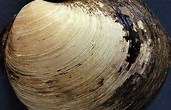This blog entry was originally posted on November 20, 2015.
The Pilgrims started their first colony in Plymouth, MA, in 1620. They endured a year of near starvation but somehow built homes, storage areas and even a church. During the second year, their farms provided a bountiful harvest, mostly due to the help and advice from the local Native Americans.
The Pilgrims started their first colony in Plymouth, MA, in 1620. They endured a year of near starvation but somehow built homes, storage areas and even a church. During the second year, their farms provided a bountiful harvest, mostly due to the help and advice from the local Native Americans.
 In November, 1621, the pioneers, in what would become known as the American Colonies, celebrated their bountiful harvest before the cold, fall season set in. Their impromptu celebration set the precedent for our annual celebration of Thanksgiving.
In November, 1621, the pioneers, in what would become known as the American Colonies, celebrated their bountiful harvest before the cold, fall season set in. Their impromptu celebration set the precedent for our annual celebration of Thanksgiving.
About 50 Pilgrims and 90 Wampanoag Indians got together some time that November. The exact date is unknown. A strict religious group, the Pilgrims believed that a thanksgiving was a gathering that included prayers and worship. But even then, the food played a major role in their celebration.
The first Thanksgiving lasted about three days. Their guests, the Wampanoag Indians, slept outside when the Pilgrims went into their homes to rest after each day of eating and celebrating. The women dutifully cooked and served the food to the celebrants, but the female Pilgrims were prohibited from joining the male partygoers who exchanged gifts and played games.
 The women boiled vegetables, roasted meats and baked bread in their ovens. A delicious smell probably drifted over the primitive encampment as the women carried the food among the party goers. The women served the men and darted back to their open fires to continue their cooking chores. For many of the women, it was the first time they made close contact with Indians. Some of them were fascinated with being near a group of people foreign to them. Others were afraid to interact with the Indians. We can speculate that the women probably talked among themselves and decided that the hard work they had to do would stop them from inviting Thanksgiving guests the next year.
The women boiled vegetables, roasted meats and baked bread in their ovens. A delicious smell probably drifted over the primitive encampment as the women carried the food among the party goers. The women served the men and darted back to their open fires to continue their cooking chores. For many of the women, it was the first time they made close contact with Indians. Some of them were fascinated with being near a group of people foreign to them. Others were afraid to interact with the Indians. We can speculate that the women probably talked among themselves and decided that the hard work they had to do would stop them from inviting Thanksgiving guests the next year. Nothing was recorded about the food that was consumed during the first Thanksgiving. But historians can surmise what the menu might have been by knowing what food sources were available to the settlers. Researchers often conclude that turkey, our staple on Thanksgiving tables, was not part of the meal the Pilgrims had. However, wild turkey was plentiful in Massachusetts in the 1600s. The Pilgrims and Indians undoubtedly ate turkey as part of the feast. Turkeys, roasted over open fires, weren’t stuffed with spices and bread crumbs back then. With turkey, they also ate duck and other migrating fowl.
Nothing was recorded about the food that was consumed during the first Thanksgiving. But historians can surmise what the menu might have been by knowing what food sources were available to the settlers. Researchers often conclude that turkey, our staple on Thanksgiving tables, was not part of the meal the Pilgrims had. However, wild turkey was plentiful in Massachusetts in the 1600s. The Pilgrims and Indians undoubtedly ate turkey as part of the feast. Turkeys, roasted over open fires, weren’t stuffed with spices and bread crumbs back then. With turkey, they also ate duck and other migrating fowl.
Pies, fruit pies as we know them, weren’t part of the staples the Pilgrims ate. The pie they knew in England was typically a meat pie and similar to what we call today a pot pie. It would have been too complicated for the Pilgrims to bake. Pumpkins grew wild, but they weren’t part of the Pilgrims’ food group, thus eliminating pumpkin pie from the menu. Wild duck was plentiful and a popular food. They also ate roots, squash, carrots, peas and corn. The Pilgrims grew all these vegetables with the knowledge they learned from the Wampanoags. Migrating fowl of several types were eaten at the feast. Staples such as walnuts and chestnuts came from the forest. Fresh corn wasn’t available in the cold autumn. Only dried corn was possible to be used on the Thanksgiving menu. The Wampanoags probably provided a favorite of theirs called sobaheg. It’s a stewed mix of dried corn, roots, beans, squash and chunks of meat. Cranberries were available, but only in their natural form. Cranberry sauce and mashed potatoes weren’t invented yet. The friendly Indians probably provided several deer to the original feast. Venison was readily available. It was a favorite food for the locals and the Pilgrims and an important source of protein in their agrarian diets.
President Abraham Lincoln made the first attempt to make Thanksgiving a holiday. He proclaimed it a national day of celebration in 1861. Lincoln hoped that the holiday would help unify the country at the beginning of the Civil War. The 16th president ordered government offices closed on the fourth Thursday of November to celebrate Thanksgiving. On October 3, 1863, the holiday became an official national observance.
In 1939, politics motivated President Franklin D. Roosevelt to move the holiday to the third Thursday of November to encourage citizens to begin their Christmas shopping one week earlier. The country was ending its worst economic decade. Roosevelt proclaimed the date change to help strengthen the weak economy.
On December 26, 1941, just 19 days after the bombing of Pearl Harbor that pushed the United States into World War II, the U.S. Congress moved Thanksgiving to its permanent place on the fourth Thursday of November. That change to the original date worked to calm a very nervous population that was facing participation in a world-wide conflict.
Thanksgiving often is considered the favorite national holiday. It doesn’t bring the pressure of buying gifts to exchange with family and friends but focuses on time spent with family. Today, turkey is the main course for most of Thanksgiving meals in the United States. According to a CNN poll, 46 million turkeys will be baked, grilled or fried this month.





















